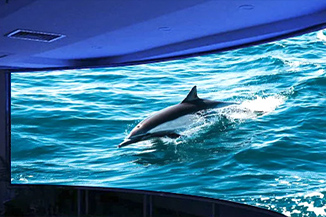Publisher: Supplier of LED Display Time: 2016-10-31 Views: 4586
First, LED display repair detection method
1, short circuit detection method, the multimeter will be adjusted to the short-circuit detection block (generally has an alarm function, such as conduction is issued a chirping sound), test whether the phenomenon of short-circuit appeared, found that the short-circuit should be resolved immediately after the short-circuit phenomenon is also the most common failure of the LED display module. Some can be found by observing the IC pins and pin pins. Short-circuit detection should be operated in the case of circuit power failure, to avoid damage to the multimeter. This method is the most commonly used method, simple, efficient. 90% of the fault can be detected by this method of judgment.
2, resistance detection method, the multimeter will be adjusted to the resistance file, test a normal circuit board at a certain point of the resistance value to ground, and then test another piece of the same circuit board at the same point of the test and the normal resistance value of whether there is a difference, if different is to determine the scope of the problem.
3, voltage detection method, the multimeter will be adjusted to the voltage file, test the suspected problem of a point in the circuit of the ground voltage, compared with the normal value of similar, it can be convenient to determine the scope of the problem.
4, voltage drop detection method, the multimeter will be adjusted to the diode voltage drop detection gear, because all the IC is composed of a basic number of unit parts, just miniaturized, so in when it is a pin on the current through the pins, there will be a voltage drop on the pins. Generally the same type of IC the same pin on the voltage drop is similar, according to the voltage drop on the pin to compare the good and bad, shall be operated in the circuit under power failure.

Second, LED display maintenance tools necessary
1, soldering iron + suction gun each 1, a number of soldering tin
2, 5V regulated power supply 1, to receive the card and repair the module or unit board power supply
3, 1 electric batch, used to quickly dismantle the module or unit plate
4, computer + send card, used to send programs to the receiver card
5、Receiver card + HUB board, used to observe the module or unit board failure phenomenon
6, a multimeter, used to detect the module or unit board specific faults
7, tweezers, scissors, pliers 1 each
Third, the basic steps of LED display repair
1, to determine the module or unit board using the HUB board type, so that the interface definition can be the same as the wires
2, according to the different models of modules or unit boards, send the corresponding program to the receiver card to ensure that the modules and unit boards in the correct program to display, which is to find out the cause of the failure of the premise. General PCB board will be printed on the module or unit board model.
3, observe the module or unit board phenomenon, to determine the initial fault. For example, common blind lights, string points, small squares and so on.
4, the use of multimeter to find out the fault, mainly by using the short circuit detection method above, between the chip and the lamp pin detection.
5, test again.